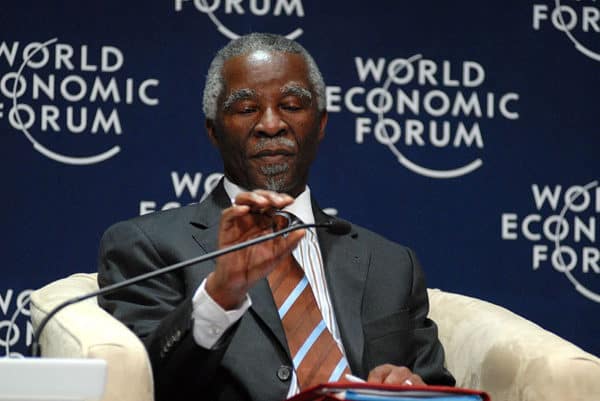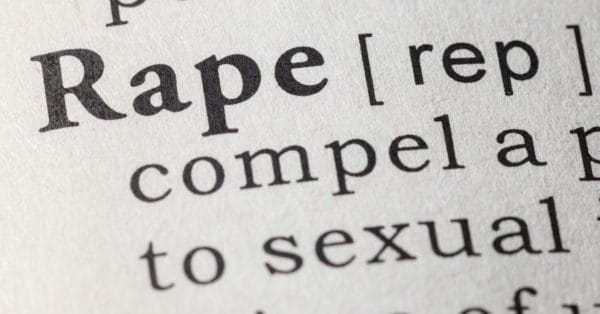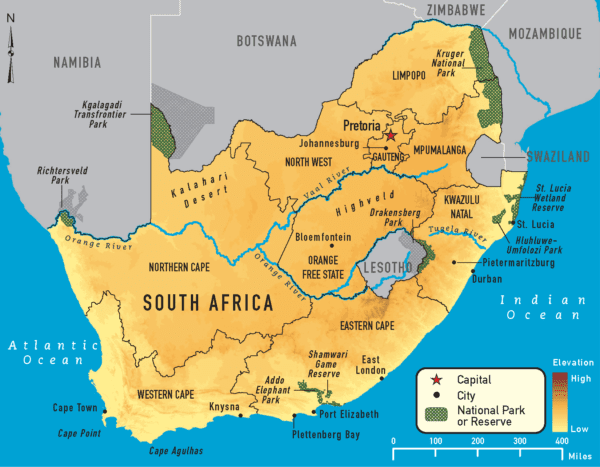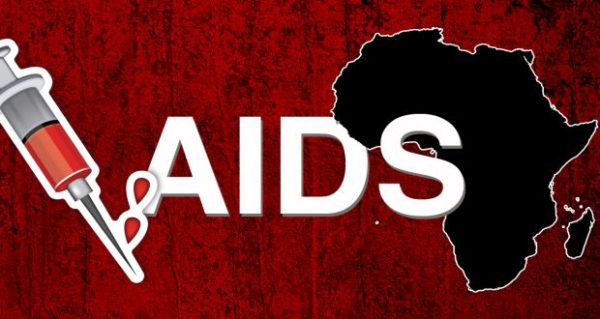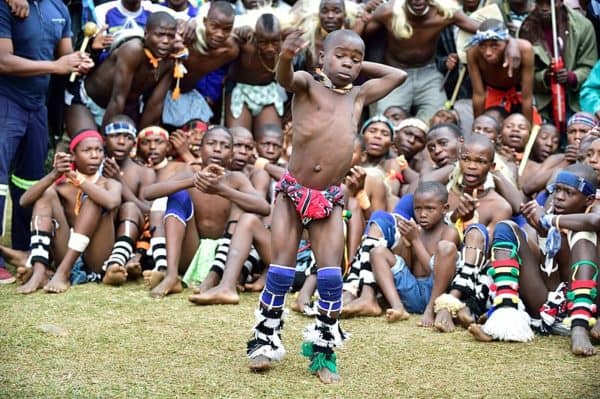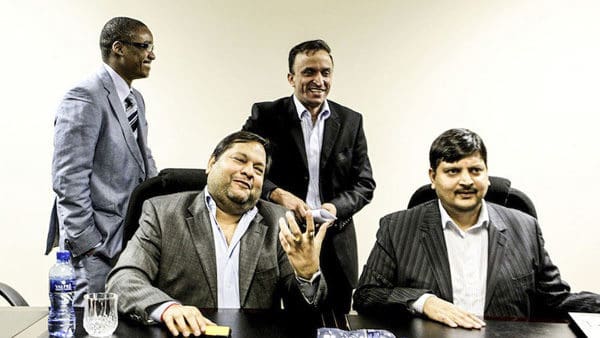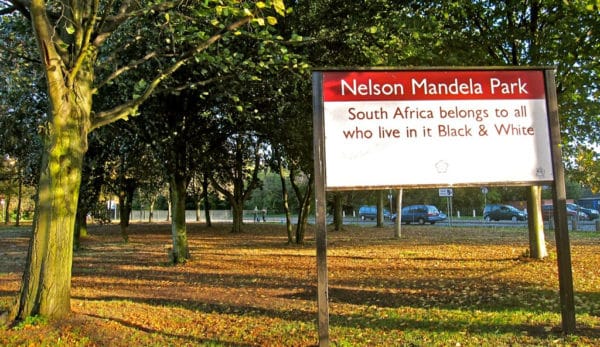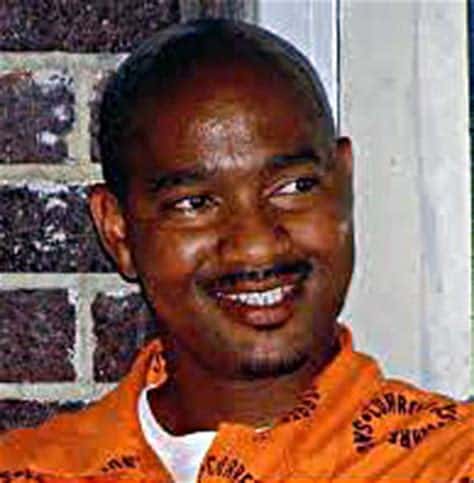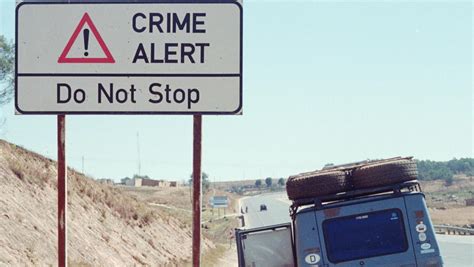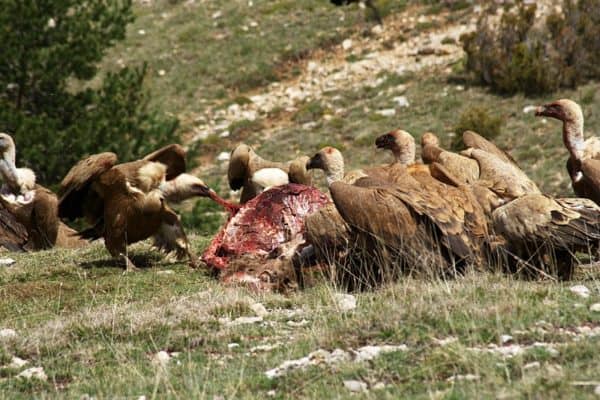Black Rule: Stories from the New South Africa, 2000–2005
- Post AuthorBy Chris Roberts
- Post DateThu Apr 30 2020
This is the second part of a timeline that traces black rule in South Africa from 1994 to the present. You can read part one here.
With Nelson Mandela out of office and many Western commentators heralding an “end of history,” South Africa continued down the tumultuous path toward total Zimbabwe-ification. Here is part two of our timeline documenting some of the cultural, political, and economic changes that have taken place since South Africa gave in to black rule. All stories are drawn from international news items and the American Renaissance archive.
South African President Thabo Mbeki (Credit Image: World Economic Forum / Flickr)
Thabo Mbeki, the new president of South Africa, says he wants the new year to usher in an “African century,” during which it will leave its tortured past behind. “Africa must flower once again as a continent of learning, of art and thriving cultural activities,” he told a joint session of the two houses of parliament. But Mr. Mbeki thinks he has spotted something that might hamper the flowering. “Racism,” he says, is stunting the development of a black business class, which must be created “to eradicate racism in our country.” Nothing circular here.
The Employment Equity Act, passed last year, is expected to be a big help in ushering in the African century. All companies with 50 or more employees, or with sales above a certain figure, or that want to do business with the government will have to make plans to hire more blacks. They must draw up a racial profile of their workforces and follow an “employment equity plan” to correct imbalances. There will be heavy fines for laggards.
At the same time, the South African Human Rights Commission (SAHRC) has released a report accusing the country’s media of “racism.” SAHRC head Barney Pityana says racism had become more explicit since the 1994 election that ended white rule. The leader of a team that spent six weeks monitoring the media reported on abuses: “We found a lot of racial stereotyping which was negative such as blacks being criminals and affirmative action being reverse racism.” The Black Lawyers Association and the Association of Black Accountants joined in the criticism, saying opinion and free expression are stifled by the fact that South Africa’s media are still mainly owned by whites. SAHRC has asked newspapers and broadcasters to explain their behavior and will then issue a final report in March. (Jeremy Lovell, S. Africa’s Mbeki Says 21st to be Africa’s Century, Reuters, Nov. 19, 1999. Andrew Selsky, Racism Remains in South Africa, AP, Nov. 20, 1999. Emma Thomasson, S. Africa Compels Firms to Promote Blacks, Women, Reuters, Nov. 23, 1999. Steven Swindells, South African Media Face Charges of Racism, Reuters, Nov. 22, 1999.)
It is not likely to be pleasant to be a white South African when the “African century” fails to flower.
South Africa’s National Symphony Orchestra, the country’s number-one classical orchestra, is shutting down after 75 seasons. It used to be supported by the South African Broadcasting Corporation, but three years after blacks started running the network they cut the orchestra off. It lived meagerly on corporate sponsors for two years before collapsing. The musicians asked the government for help but the government now has money only for African arts. (Daniel Wakin, Top South African Orchestra Closes, AP, Jan. 20, 2000. Anton La Guardia, South African Orchestra Closes as Funds End, London Telegraph, Jan. 25, 2000.)
South Africa has what is probably the highest rape rate in the world — a reported 120 per 100,000 population with probably many more rapes unreported. The US rate is about 35 per 100,000. South African men appear to have a rather casual attitude towards rape. In a survey of more than 27,000 young men and women, 80 percent of the men said they thought women were responsible for being raped. Thirty percent thought women who were raped were “asking for it” and 20 percent thought women enjoy being raped. One in four of the men said they had raped at least one woman before they turned 18. [One in Four S. African Men Admit Rape — Survey, Reuters, June 25, 2000.]
A few white men still get respect in South Africa — at least certain dead ones. The word is going around that people with AIDS will be cured if they drink tea brewed from the bones of well-known whites. The farm manager of Hannes Rall, who was a deputy minister of transport in an apartheid administration, helped dig up his former employer’s bones and put them on the market. There is apparently no word on whether the cure will be more potent if the bones are taken from freshly-killed whites. [Grave Robbed to Cure AIDS, Electronic Telegraph, Sept. 25, 2000.]
South African President Thabo Mbeki has become famous for promoting the view that AIDS is caused by something other than the human immunodeficiency virus (HIV). He has finally let the other shoe drop, and now says the HIV theory is part of a fraud perpetrated by western drug companies on the developing world. If the companies can convince people HIV is to blame for the epidemic there are fortunes to be made selling drugs that do no good. In an address to African National Congress members of parliament, Mr. Mbeki also said the CIA was part of the disinformation campaign. He added that the west is particularly annoyed with him because South Africa is leading the Third World in the struggle to get better terms of trade with industrial countries. This latest outburst has dismayed Mr. Mbeki’s handlers, who have tried to downplay his eccentric views on AIDS and realize they are damaging his credibility. [Howard Barrell, Mbeki Fingers CIA in Aids Conspiracy, Daily Mail & Guardian (Johannesburg), Oct. 6, 2000.]
The AIDS epidemic in South Africa is raging through the prisons. The disease now accounts for about 90 percent of non-violent deaths among South African prisoners, which have gone from only 186 in 1995 to more than 1,000 in the first ten months of 2000. Gideon Morris of the South African Office of the Inspecting Judge says rape spreads the disease: “It is estimated that between 70 percent and 80 percent of all arrested suspects are sodomized by fellow prisoners before they are even officially charged,” he explains. “Many suspects are raped within the first 48 hours of being detained.” Overcrowding and lax prison guards make it easy for prisoners to assault each other. Mr. Morris is particularly concerned about the 40 percent or so of arrested suspects who are eventually found not guilty but go home with a case of AIDS. [AIDS-Linked Deaths in S. African Prisons Soar, AFP, Oct. 17, 2000.]
South Africa is developing the world’s premier child sex industry. Legal loopholes make it difficult to prosecute pedophiles and there is a ready supply of underage prostitutes. This, combined with high demand both from locals and tourists, has created an industry that has attracted organized crime from Angola, Bulgaria, Thailand, Hong Kong, and the Russian Mafia. Many parents are willing to sell children as young as four in what are the equivalent of sex-slave markets. Brothel operators are the usual buyers but many individuals are in the market, too. It is reportedly common to make the children do housework when they are not servicing their “masters.” By some estimates there are 38,000 child prostitutes in South Africa, with a high concentration in Cape Town. Demand is so high smugglers bring children in from Angola, Zimbabwe, and even Eastern Europe. Child prostitution was highlighted recently by wide publicity given to a woman from Mozambique who was stopping cars on a freeway off ramp, offering to rent out her daughters, aged seven and ten, for the equivalent of $26.00 a week. [Steven Swindells, Child Sex Trafficking on Rise in South Africa, Reuters, Nov. 23, 2000.]
But there has also been good news for the multi-racialists, who say former apartheid-supporters are coming over to the African National Congress. Robby Sutherland of Roodeplaat, 51, spent most of the past 25 years in conservative white politics, serving in Parliament for nine years as a member of the Afrikaner Herstigte Nasionale Party. Now he says he has had “an epiphany.” “I didn’t expect the ANC government to be so open-minded and let our white people join and be a part of them,” he says. “This is the most democratic party ever in South Africa and that moved me.” He has even run for political office as an ANC candidate, and shouts “power to the people” and “long live the ANC” in Zulu at campaign rallies.
Mr. Sutherland is not alone. Pik Botha, former foreign minister with the National Party, has joined the ANC. Late in 2000 there was much rejoicing when Craig Kotze, a former secret agent for the apartheid regime, announced at a news conference that he had “finally come home to the ANC.” He denies he is an opportunist and claims that he just “needed to get out of the ghettoes of my mind.” He says he wants to work as a bridge between the ANC and other Afrikaners. [Ravi Nessman, Reformed Right-Wing Racist Joins ANC, AP, Dec. 1, 2000.]
Meanwhile, more white farmers are being killed. In November, blacks strangled a 59-year-old woman on her chicken farm and shot and wounded a 82-year-old man who returning to his farm from church. Blacks have killed more than 1,000 farmers since 1996, which makes being a white commercial farmer the most dangerous job in the country. [Steven Swindells, South Africa Hit by New Rural Race Murders, Reuters, Nov. 20, 2000.]
2000:
Almost one in three deaths in South Africa are caused by Aids making it the leading killer, according to research.
In two provinces, the figure is as high as 40%, says an unreleased report by South Africa’s Medical Research Council.
Research was based on the study of death statistics for the year 2000. [BBC, May 18, 2005]
2001:
Police admit that in this year alone, “2,500 people were caught in possession of human body parts,” a product of “’muti murders’ — the killing of people for their body parts” [Ginny Stein, ABC News, October 3, 2011]
Everyone knows crime is getting worse in South Africa but no one knows just how bad it is. Since last summer the country has refused to release crime statistics, claiming they are so poorly and inconsistently gathered they don’t make sense. The government may have a point. About a quarter of police officers cannot read or write, and those who can sometimes get it wrong. Pickpocketing on a bus is sometimes called a “cash in transit heist,” a category usually reserved for armored-car holdups. Police authorities also note that according to the statistics, some white suburbs are more crime-ridden than the shanty-towns. This is because whites report and record every crime while blacks-both victims and police-are more lackadaisical. [Philippe Bernes-Lasserre, Violence a Well-Kept Secret in South Africa, The Age (Melbourne, Australia), Feb. 16, 2001.]
Still, many people believed the police were refusing to publish the data simply because they are shockingly high, and amid the controversy a policeman made a few leaks to the papers. In Pretoria armed robbery is reportedly up by 50 per cent over the previous year and carjackings by almost 25 percent. [Crime Rise Rocks South Africa, The Age, Feb. 23, 2001.]
In South Africa, a former member of the special forces has founded a new security company to protect farmers. Wynand du Toit points out that more than 1,100 white farmers have been murdered since the ANC took power in 1994, and has no doubt about the purpose of the killings: “There are no traditional criminals involved in the farm attacks. It is well-planned, military-style operations that are taking place. It is a well-planned action [aimed at forcing] white farmers to abandon their farms so that blacks can move in.” Lately, he says, attackers let their victims call neighbors for help and then ambush and kill the rescuers as well. He adds that it is no accident blacks target children for rape and torture: “Children are the future. Destroying children prevents us from having a future. Of course, the killing of children is also a psychological onslaught against the farmer, which might force him to leave his farm in order to protect them.”
Mr. du Toit’s new security company, Lanseria Protection Services, has teams of ex-special forces men on call 24 hours a day, who can be helicoptered anywhere in the country or parachute out of airplanes. He says the attackers have been frightened away from the areas in which his men have been active, and that local farmers look on his service as their only hope for survival.
Mr. du Toit thinks the killings are orchestrated by the Pan African Congress, and that the ANC is not yet at the stage of systematically killing whites. At the same time, police morale is so low, and so many experienced white officers are quitting, he thinks that within several years it will not be possible to solve major crimes. He notes that whites cannot count on help from abroad: “I have not noticed any response from the U.N., U.S. or the UK to the killings by blacks of white farmers in South Africa. Remember, we are white. Only whites can be racist. Blacks can’t be racist. They do not lie, and in the eyes of many overseas people, these attacks must be seen as a justification of the past. I do not think that the U.N. will spend one minute a month on the murders in South Africa.” [Anthony C. LoBaido, Wynand du Toit, a Special Forces Hero Committed to Saving Farmers at Risk in Southern Africa, WorldNetDaily. com, Aug. 15, 2001.]
One of the more hideous recent attacks took place on July 27, when eight blacks attacked Mr. and Mrs. Johan le Grange, an impoverished rural couple in their 80s. They tortured both victims with hot irons and tore out fingernails before beating Mr. le Grange to death. Mrs. le Grange survived but remains severely traumatized. The men then went next door to the home of the le Grange’s daughter and her four-year-old daughter, whom they raped and tortured for several hours — but did not kill.
Henda Wolfardt, a South African farmer who lives near Ventersdorp with her husband and two sons has noticed a world-wide pattern: “The blacks are killing whites in Zimbabwe, Kenya, South Africa and even in the U.S. in the recent riots in Seattle and Cincinnati. In Australia, the Aborigines are calling for the blood of the white farmers. The Russians are fighting against Islam in Chechnya. White Christians are attacked in the Balkans and Macedonia. What will it take for people to wake up?” [Anthony C. LoBaido, Killing of South Africa Farmers Intensifies, WorldNet Daily.com, Aug. 1, 2001.]
Adriana Stuijt, a Dutch journalist, used to be a fervent anti-apartheid crusader. After several years of covering the new South Africa, she is not nearly as happy with it as she expected to be. “I used to work as a medical journalist in South Africa for many years and have covered a large variety of epidemics in those years,” she explains. “Nothing I have seen compares to the current slaughter inside the country today: More than 200,000 people have already been murdered in crime-related violence . . . South Africa’s small number of remaining commercial farmers are indeed the world’s most endangered profession.”
Miss Stuijt notes that public health has collapsed under black rule. Not only is AIDS out of control, but 100 people have died of cholera in the last few months. Millions of children suffer from malnutrition, and the country is now going through the worst tuberculosis epidemic in its history. Malaria and sleeping sickness, which whites brought under control are making a comeback.
The country’s health authorities have taken one important precaution against AIDS. They have issued condoms to South African census takers for their protection, should they be “led into temptation” as they make their rounds. One opposition member of parliament worried that census takers “may be encouraged to forget that their task is to accumulate statistics to help good government.” [Christopher Munnion, Condoms Given to Census Staff, Telegraph (London), Oct. 8, 2001.]
Miss Stuijt has also noticed another casualty of black rule: freedom of the press. Although the evidence of decline is everywhere, it is not permitted to write about it. “Self-censorship inside South African news media is now greater than ever,” she says. [Anthony LoBaido, South Africa Deteriorates Under ANC Rule, WorldNetDaily.com, Sept. 16, 2001.]
In South Africa, which has the world’s highest rape rate, there is said to be a rape every 26 seconds. Many of the victims are children, with an estimated 58 child-rapes every day. In 1998, the South African National Council for Child and Family Welfare reported that child rape had increased by 78 percent since 1994 (the last year of white rule), and the rate continues to climb. One of the reasons there is so much child rape is that many South Africans think sex with a virgin cures AIDS.
Infants have been the latest victims. In late October six men in Kimberley gang-raped a nine-month old baby, whose 16-year-old mother had gone out to buy food. The rapists, aged 22 to 66, did so much damage to the child she required a full hysterectomy, and will need several more operations to repair her rectum and intestines.
On November 24, someone snatched an eight-month-old Cape Town girl from her parents’ bed while they were sleeping, raped and sodomized her, and left her bleeding on the sidewalk. Passersby found the girl at 3:40 in the morning and took her to a police station. Police believe the perpetrator(s) crept in through the window to take the child. The parents did not realize she was missing until a neighbor woke them up to tell them a baby had been found in the street, and asked if theirs was missing.
Rape of older girls is more or less routine. Three days before the Kimberley rape, a man reportedly raped his three-year-old granddaughter, and about the same time a 14-month-old was raped by two uncles. On Nov. 2, police in the Northern Province reported that a four-year-old girl had died of injuries she sustained four months ago when her 35-year-old father raped her at her home in Tshirolwe.
Although baby-rapes have shocked even South Africans, many men do not think rape is a very serious crime. A judge recently sentenced a rapist to just seven years in prison, saying he was a first-time offender and not likely to be a danger to society. After all, it was only his own 14-year-old daughter that he had raped. [Charmaine Pretorius, Baby Has Hysterectomy After Gang Rape, Independent (London), Nov. 2, 2001. Ann Simmons, Rise in Rapes of Children Outrages South Africans, L.A. Times, Nov. 7, 2001. Sue Thomas, AIDS ‘Virgin’ Myth Drives South Africa’s Hideous Child-Rape Epidemic, Reuters, Nov. 5, 2001. Murray Williams, Sleeping Baby Stolen, Raped and Abandoned, Independent on Line (South Africa), Nov. 24, 2001.]
The New York Times recently looked into the way ordinary Africans in the most heavily infected province, KwaZulu Natal, think about the disease. In the Zulu town of Hlabisa, 35 percent of adults are HIV positive. The men are essentially fatalistic. “Because if your are a man, you are born to die,” says one. “We are not scared of death,” says a police officer. “I don’t see the importance of AIDS.” Another man is somewhat more reflective: “Because we are Zulus, we don’t believe AIDS can affect us. We see our sisters dying, but we don’t believe it’s AIDS. We think it’s TB or pneumonia.” By now they have all heard the message about safe sex, but when more than 1,000 Hlabisa adults were asked about condoms, only 26 percent said they had ever used one. The men say condoms dull the pleasure, and many are suspicious of them. “Some men say condoms come from the white man to stop us having children,” says one 40-year-old. “Some think the AIDS is inside the condom,” he adds.
Most women have no say over whether a man uses a condom. One morning eight women in their 20s and early 30s who work as volunteer AIDS educators gathered to practice delivering the message: Don’t have sex; if you do, use a condom; stick to one partner. Not one of the women takes her own advice. As one explained:
“For us Zulus, it has been a tradition for men to have extra women. We do ask them to stop, but it’s up to them to change. If he doesn’t want to use condoms, I can’t do anything. If I say no, he might go and take another lady.” If a woman asks a man to wear a condom he will accuse her of being promiscuous or infected. “And he will hit you,” says one woman. “Definitely, he will hit you.”
Zulu men agree that women have no say in the matter. “The woman has no power with the man,” says a schoolteacher. Of his wife, he says, “Because I paid 11 cows for her, she is supposed to do everything I say.”
In a town where there is a lot of fornication and much promiscuity, there is still great embarrassment about AIDS, because it is sexually transmitted. Zulu children almost never get sex education at home because their parents are too shy. When even prominent townspeople get sick with AIDS, it is as if they suddenly ceased to exist. No one talks about them, because they are dying of an unspeakable disease. Zebulon Mthethwa is a retired Anglican priest called back into service because there were not enough priests for funerals. He says AIDS is taboo. “People are afraid of talking about it. They are afraid to say, ‘Here is the danger that is coming.’” [Rachel Swarns, South Africa’s AIDS Vortex Engulfs a Rural Community, New York Times, Nov. 25, 2001. Donald McNeil, AIDS and Death Hold No Sting for Fatalistic Men at African Bar, New York Times, Nov. 29, 2001.]
Zulus in South Africa (Credit Image: South African Tourism via Wikimedia)
The number of people dying of Aids in South Africa is more than three times higher than government figures suggest, the country’s medical research council said.
Many people who died from HIV/Aids were recorded as having died of related illnesses such as pneumonia and tuberculosis, the council said. The stigma still attached to the disease had helped keep figures artificially low.
In research published in the journal Aids, the article’s authors estimate that more than 112,000 people died of HIV-related illnesses in 2000-01, almost three times the number given by South Africa’s department of home affairs.
The article adds that about 74 per cent of children under five who died in the same year died of HIV/Aids-related illnesses, rather than the 25 per cent that government figures suggest.
Asian Indians make up about three percent of the population of South Africa. Many South African blacks think Indians benefited unfairly under apartheid, and they see them as oppressors who pay low wages and despise blacks. These feelings are echoed in the lyrics of a song by black playwright Mbongeni Ngema, who wrote the musical “Sarafina!” The song is called “Amandiya” or “Indians,” and is about the exploitation of blacks. Some of the words are: “Oh my fellow brothers, we need strong, brave men to confront Indians. Everything was taken by Indians and then they turn to oppress our own people.” Indian leaders say Mr. Ngema is racist, and want radio stations to stop playing the song. Former president Nelson Mandela wants Mr. Ngema to apologize.
No apology is likely. “If there wasn’t this reality, I wouldn’t have written this song,” says Mr. Ngema. “People would rather not deal with it, but the African-Indian problem is a very deep rooted one. As long as I can remember, people have been talking about how oppressive Indians are to Africans.” [Rachel L. Swarns, A Hit Song Puts Ethnic Tensions at Center Stage, New York Times, June 10, 2002.]
Left to right: Duduzane Zuma (Jacob Zuma’s son), Ajay Gupta, Jagdish Parekh and Atul Gupta. The latter three being some of South Africa’s most famous Indians.
Since 1994, when the African National Congress took power in South Africa, blacks have killed 1,334 farmers, farm workers, and family members. Blacks have also killed 12 white farmers in Zimbabwe and four in Namibia. The dispossession of farmers and the resulting famine in Zimbabwe have been well publicized, but the same process in South Africa is largely ignored. As Dutch journalist Adriana Stuijt explains: “These [murders] ‘only’ occurred in South Africa, and so the rest of the world remains oddly silent. Post-apartheid South Africa is apparently immune from the usual investigative journalism being conducted in the rest of the Western [?] world.”
The murder rate for South African white farmers is now 264 per 100,000, or nearly 40 times the murder rate in the United States. Since 1994, half of all white commercial farmers have either been murdered or have shut down operations rather than risk death. As a result, this year there will be 2.5 million fewer acres of corn harvested than during the last year of white rule, and South Africa could soon be joining Zimbabwe on the food line.
The South African government is largely indifferent to the plight of farmers. President Thabo Mbeki describes the killings as “the final stage of the revolution.” At the funeral of Peter Mokaba, an ANC member of parliament who recently died, “mourners” chanted “Kill the Boer, kill the farmer,” a slogan Mr. Mokaba is said to have coined. Cassie Aucamp of the Afrikaner Unity Movement points out that this kind of provocation draws little comment. “Imagine the uproar,” he says, “if Afrikaners were to start chanting, ‘Kill the Xhosas, kill the blacks’” at the next funeral of a murdered farmer.
A white South African activist in the Transvaal Agricultural Union says there is no hope for white commercial farming in southern Africa. “It might indeed be a good idea for the US Congress to hold hearings on the farm killings,” he says, “and extend visas to the Boers to go live in the United States.” [Anthony LoBaido, ‘Kill the Boer, Kill the Farmer,’ WorldNetDaily.com, July 28, 2002.]
A study on sexual violence in South Africa has found that many children think rape is normal and acceptable. A survey of 9,300 children under age 18 found that, depending on the part of the country, 12 to 20 percent of boys, and five to 13 percent of girls admit having forced themselves on others. “Girls in the 10 to 14 years age group made shocking revelations,” says Neil Andersson of Community Information Empowerment and Transparency: Africa, which conducted the study. “Many claimed to have had sex with other children [boys and girls] without their consent. They have tough attitudes about sex, similar to the attitudes of adult men,” he added. The study also found that by age 18, 30 percent of children who attend schools have had sex in some form forced on them. “The children believe that this is what they have to do to be successful in life,” says Mr. Andersson. [Suthentira Govender, Girls and Boys Think Raping Fellow Pupils is Normal, Sunday Times (Johannesburg), Oct. 6, 2002.]
Recently, a 29-year-old woman from Gloucestershire, England, flew to South Africa for a three-month visit with her white South African boyfriend. On November 16, the two were driving through the picturesque mountains of the Eastern Transvaal and stopped at a scenic overlook. Five blacks came out of the bush waving a pistol. They beat the two whites, gagged them, tied them up, and threw them in the back of the car. They then drove for 14 hours around the Transvaal, stopping frequently at illegal drinking dens called shebeens. The blacks got drunker and drunker, and several times brought other drinkers out to the car to show off the two trussed-up whites. They rightly assumed no one would object or call the police. The men frequently punched and kicked the defenseless whites. At least one of the attackers raped the woman repeatedly, but they do not appear to have passed her around the shebeens. They fired the pistol several times towards the couple, once through the floor of the vehicle where they were lying.
The blacks got so drunk that at 4:00 a.m. the next morning the driver lost control and flipped the vehicle. Two passing cars stopped to help, and as one of the drivers approached, a kidnapper shot him in the head, killing him. In the confusion, the whites escaped into the darkness, and were later able to flag down a passing motorist. The police picked up the couple, and as they were driving to the police station, the whites saw two of their attackers walking along the road. Police arrested them and found one had the man’s wallet and cell phone.
Several days after her ordeal, the woman was reportedly in such a state of shock she could still not give a statement to police. Doctors were giving her drugs to combat the AIDS virus, which her attackers may well have given her. [Tim Butcher, AIDS Terror of British Tourist Raped by Gang, Telegraph (London), Nov. 19, 2002.]
Blacks killed another white tourist in the same province just a few days later. On Nov. 21, Geoffrey Dex, who lives in South Africa, was staying with his family at the Umbhaba Lode in Hazy View. At about 10:15 in the evening he heard a noise at the bar and walked over to investigate. Three masked men, who were holding up the receptionist, shot Mr. Dex three times in the chest. There have been at least 29 violent attacks on foreign tourists alone in the province, which have undercut its attempt to promote itself as an exciting new vacation destination. [Tourist Killed For R1,000, African Eye News Service, Nov. 22, 2002.]
Meanwhile, South African prison gangs have a new punishment for disobedient inmates: rape by AIDS carriers. The prisoners call the punishment “slow puncture” because the victim, once infected, dies a lingering death, just like a tire slowly going flat. Gideon Morris, director of the South African Judicial Inspectorate of Prisons, says AIDS may now be the leading cause of death in the country’s prisons, but it is difficult to say because many AIDS deaths are incorrectly listed as death from natural causes. [Reuters, S. Africa Prison Gangs Use AIDS Rape as Punishment, Nov. 21, 2002.]
A poll of a representative sample of 2,400 South Africans has found that 60 percent say the country was better run under white rule. Only one in three said the current government was more trustworthy than the apartheid regime and the figure for blacks was 38 percent. Only one in ten respondents said they thought the government was interested in their needs or concerns. [Rory Carroll, Nostalgia Grows for Apartheid System, The Guardian (London), Dec. 12, 2002.]
Credit Image: ivanatman / Wikimedia
A security guard was found guilty yesterday of the 2001 murder of Marike de Klerk, the former wife of South Africa’s last white president.
Luyanda Mboniswa was convicted by the Cape High Court of housebreaking and murder, but acquitted of rape.
Mrs De Klerk, 64, was stabbed in the back with a steak knife and then strangled at her high-security Cape Town apartment in December 2001.
Pathologists suspected she had also been raped, but Judge John Hlope said that could not be proved beyond doubt. [Security guard guilty of killing De Klerk’s ex-wife, Sydney Morning Herald, May 14, 2003]
Luyanda Mboniswa
Now that blacks have taken over the country whites built in South Africa, they are demanding “reparations” for apartheid. The reasoning is as follows: Whites kept blacks out of certain jobs and certain areas. Whites were (and still are) richer than blacks. Therefore whites owe blacks money. This ignores the fact that although blacks in South Africa were certainly poorer than whites, they were far better off than the neighboring blacks who had no whites to run their countries. Under apartheid, South Africa had a big problem with illegal African immigrants who wanted a piece of the good life under apartheid. Now that blacks are in charge, immigrants are less eager to come.
Activists have sued companies, foreign and domestic, for reparations because they “propped up” apartheid. The United States has the best laws for this sort of shakedown, and the South African Council of Churches was planning a big meeting in July to report on the suits. Blacks were looking forward to the big payday when it began to dawn on a few people that South African companies and South African subsidiaries of American companies might be liquidated if courts award damages. This would mean the end of many of the best jobs in the country.
Companies doing business in South Africa have instead agreed to contribute “voluntarily” to a reparations fund if the suits are dropped. Justice Minister Penuell Maduna wants everyone in South Africa to contribute. The fund will be run by a committee that will decide who are the most deserving victims of apartheid and which groups should be specially rewarded for their part in ending white rule. [Christelle Terreblanche, Business Pledges Reparations for Apartheid, Sunday Independent (London), June 29, 2003.]
Johannesburg, South Africa is one of the most dangerous cities in the world. In 2000, it had 15,000 residential burglaries and nearly 2,000 murders or attempted murders. The black government cannot control lawlessness, so the city’s more affluent — mostly white — residents have closed off access to their neighborhoods with bars, gates and manned barricades on public streets. The first barricades went up within days of the 1994 election that brought black rule, and there are now estimated to be 500.
There have been complaints that the blockades are “racist,” restrict traffic, and inconvenience domestic workers who must show ID. The city council has announced that residents must now submit access control applications to justify barricades. Unless they get council approval, which is expensive, time-consuming and unlikely, residents must dismantle the barricades or pay the city to tear them down. Jo’burgers are looking for other ways to protect their homes. [Toby Reynolds, Anti-Crime Barriers in Johannesburg Raise Hackles, Reuters, July 16, 2003.]
When whites discovered diamonds on land occupied by the Nama tribe near Alexander Bay, South Africa, in 1925, they took the land under the legal concept of terra nullius (empty land), which holds that uncivilized peoples do not have property rights. The Nama, who are similar to South African bushmen, were nomadic goat herders. The South African government opened a state-run diamond mine, and earlier this year, miners found a 111-carat diamond that fetched $3 million.
When the ANC took over in 1994, it passed the Land Restitution Act, under which indigenous people who lost land because of “racial discrimination” could file to reclaim it or receive financial compensation instead. The Nama went to court, but the ANC government, which now owns the diamond mine, opposed their claim — citing the doctrine of terra nullius. ANC lawyers argued that the 2,200 Nama, who live in tin shacks without running water or electricity, are still so backward they have no ownership rights, and that returning their land would “open the floodgates” to countless other frivolous claims.
“I use this word carefully,” says Gert de Wet, leader of the Nama, “but I am accusing the ANC government of being racist. In my view . . . the [brown-skinned] Nama people are not black enough to be treated fairly.” [Tim Butcher, Tribe Accuses ANC of ‘Diamond Apartheid,’ Telegraph (London), Sept. 13, 2003.]
On Oct. 14, South Africa’s constitutional court ruled in favor of the Nama, awarding them the land at Alexander Bay, the diamond mine, and compensation for all diamonds mined since 1925. The compensation alone amounts to an estimated $1.5 billion — more than $680,000 per Nama. [Tim Butcher, Tribesmen Win “900m Suit Over Diamonds, Telegraph (London), Oct. 15, 2003.]
More than 70 percent of South Africans buy lottery tickets, including 58 percent of those who earn less than the minimum wage. “The lottery sells fuel for your psychological fantasies about becoming stupendously and fabulously rich,” says South African gambling researcher Peter Collins. Other forms of gambling are also popular. Thirty-two casinos with 20,000 slot machines have opened since the end of white rule, during which gambling was illegal. South Africans as a whole spend 1.9 percent of their incomes on gambling, whereas Americans spend only 0.6 percent. Poor South Africans spend an average of 10 percent of their income.
Gambling is bad news for vultures. Many South Africans believe they arrive at a carcass within a short time of the animal’s death because they are clairvoyant. According to witch-doctors, anyone who drinks a potion made from ground vulture bones can predict winning lottery numbers. “Because of the lottery, a lot more vultures are being killed,” says Terri Wolfe of the Endangered Wildlife Trust of South Africa. [Lottery Draws Throngs of the Poor in South Africa, Los Angeles Times, Dec. 19, 2003.]
Credit Image: Mario Modesto Mata / Wikimedia
Convicted murderer and rapist William Kekana told the Temba Circuit High Court on Tuesday he had murdered members of a Pretoria family because they were white . . . Kekana, who on Monday was found guilty on all 14 charges relating to the hijacking, abduction, murder and rape of Janine Drennan, the murder of her one-year-old daughter Kayla, the murder of grandmother Hester Rawstone and the rape and attempted murder of a 17-year-old girl, told the court he had killed the family because they were white and because of apartheid. [News24, July 27, 2004]
South Africa, once Africa’s last bastion of white rule, has something you don’t often see elsewhere on the continent: poor whites. A few years ago it was unimaginable to see whites begging at traffic lights or working as parking attendants. Now it is a common sight . . . According to a United Nations Development Programme report last year, 6.9 percent of the country’s white population lived on less than 354 rand per month — the national poverty line in 2002 — up from 1.5 percent in 1995. [Lucia Mutikani, Reuters, December, 10, 2004]
About 50 children per day are raped in South Africa . . . That is according to the official figures, which specialist groups say grossly underestimate the true scale of the phenomenon depicted in police reports.
Regular police reports recount girls as young as five being raped, sometimes by boys who are barely in their teens.
South Africa is notorious for the number of rape cases and, according to Captain Percy Morokane, about 40% of the victims, or 20,000 a year, are under the age of 18.
But according to organisations such as Rape Crisis, the total of all rapes reported, more than 52,000 a year, is far from the real figure which they put at more than a million. [Florence Panoussian, Mail and Guardian, June 16, 2005]
More than 6.5 million of South Africa’s 47 million people could be infected with HIV, according to a government report released Monday, a sharp increase from previous estimates.
A 2004 Health Department survey of more than 16,000 pregnant women attending antenatal clinics indicated between 6.29 million and 6.57 million South Africans were infected with the virus that causes AIDS, compared to 5.6 million in 2003. [AP, July 11, 2005]
People who are quick to condemn the United States as hopelessly violent are largely silent about South Africa. Since blacks took power in 1994, South Africa has seen a dramatic upsurge in murder. Gunfights routinely take place on city streets and in shopping malls. Robbers more often than not murder their victims — whether or not they resist. Between April 2004 and March 2005, 18,793 people were murdered in South Africa — an average of 51 per day in a country with a population of 44 million. There were an additional 24,516 attempted murders, 55,114 reported rapes and nearly 250,000 violent assaults. (Since these are government figures, the actual numbers are probably much higher.) A South African is therefore officially 12 times more likely than an American and 50 times more likely than a Western European to be murdered. [Terry Leonard, Murders, Theories Abound in S. Africa, AP, Sept. 27, 2006.]
